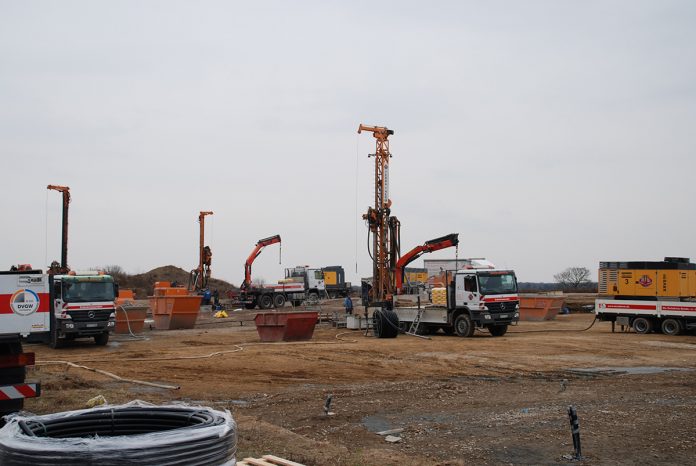Jordi Albacete, Communications Officer from the EU-project GEOCOND explains what we need to know about Shallow Geothermal Energy Systems towards a more sustainable future
The COVID-19 global pandemic has affected us in the way we look at our future. A set of coordinated solutions are needed to embrace a more sustainable future. One of the most ambitious plans is the European Green Deal, which aims to make Europe the first neutral continent in the world by 2050. Transitioning to cleaner energy systems is paramount to meet this goal; especially, considering that the European Commission estimated in 2018 that 75% of the European Union (EU) building stock was energy inefficient, so the integration of new renewable energy sources in buildings is critical.
Geothermal energy, in different forms and exploitation ways is under the spotlight since the ground has an excellent capacity for storing energy that can cool and heat our buildings. However, the Shallow Geothermal Energy Systems (SGE) sector needs some updates in its technology to make it more investable for end-users. Enhancements on the different elements conforming the borehole fields will presumably increase the efficiency and the attractiveness of these technologies in new markets such as Mediterranean countries.
In this context, the EU-project GEOCOND, funded by the HORIZON 2020 Programme, is producing high impact results for increasing the efficiency of the SGE systems. Universities and companies from seven countries take part in this project.
The advantages of SGEs make this technology quite attractive to researchers. As Javier Urchueguía, Professor at the Polytechnic University of Valencia, GEOCOND Coordinator, says: “These systems are electric-driven, using heat pumps, they can be highly effective when the most suitable thermal source is used and can provide with heating, cooling and hot water at the same time.
“In addition, these systems can be integrated into buildings, and used with other RES thermal or electric sources. The maintenance is really low,” Urchueguía adds.
There is a great potential to innovate in these SGEs. GEOCOND’s research covers key elements at the heart of SGESs: plastic pipes with improved conductivity, grouts with enhanced characteristics in different sizes, and new materials to increase the heat storage capacity.
Highly conductive pipes
The R&D results of several projects dealing with shallow geothermal systems will trigger a strong renewal of the sector increasing the potential of new installations around the world; this is the reason why GEOCOND exists.
“Big plastic suppliers were not interested in producing new compounds for pipes since, probably, the geothermal industry was too niche. Materials such as PE-100 were used at this application and this was not aimed as a SGE application,” Prof Urchueguía notes.
The project has successfully reached its final year, and its list of outcomes is already proving to be promising. Some of those results include a new algorithm for material optimisation considering thermal, energetic and economic variables. The project’s new plastic compounds multiply the conductivity of PE-100 by a factor of three, all this while maintaining mechanical properties and other critical specifications related to weldability and manageability. In addition, new geometrical configurations have been developed, including configurations with different types of plastics.
Conductive grouting and borehole heat exchangers
Another component of SGEs where gains can be made is the grouting: the characteristics of the materials that hold the pipes in place in the borehole greatly influence the performance of these systems. Researchers at GEOCOND have worked closely to advance the grouting technology, therefore, increasing the main thermal properties involved in the performance.
One of the goals to cut on the cost of the system is to make the grout more conductive. As Ayten Çaputçu, who leads the research contributed to GEOCOND by Turkish cement manufacturer Çimsa, explains, the more conductive the grout, the more efficiently it will transmit the Earth’s warmth to the water running in the closed loop, and the shorter the length of pipe (and the depth of the borehole) required to achieve the expected temperatures, she explains. The Consortium is working on enhancing the thermal properties of the materials involved in the construction of the borehole exchangers, making them more effective, fulfilling other requirements such as sealing properties and the mechanical resistance.
The porosity of the grout, the proportion of silica sand and the relative proportions of water and cement involved are key components to make the grout more conductive, Çaputçu outlines. GEOCOND has tested several formulas to improve the properties of the grouts more specifically, the thermal conductivity and rheological – flow- and deformation-related – properties of the grouts. The enhancement of the grout has been achieved thanks to the inclusion of innovative additives that can also improve the conductivity. A hybrid structure combining carbon and silica can make the grout more conductive as Burcu Saner Okan, Coordinator of the work undertaken by Sabanci University for GEOCOND explains. This new family of grouting compounds with improved specifications have been tested in real-scale conditions with excellent control of their properties.
The increment of the thermal storage capacity of the grout and underground has been another area of research in our project. GEOCOND’s team has developed an improved system of grout and phase change material mixtures to enable underground thermal storage at different temperature levels. This application, which is a real novelty in the sector has a special interest for district heating and BTES fields
Testing in real capacity
The project team is now focusing on its three pilot plants which will validate the results of our project. The objective of the test sites is the real validation of our enhancements by means of comparisons with standard installations to decipher the real gains produced by our research activities. During the next few months, we believe that those test sites will produce fruitful results.
The four-year work of GEOCOND is paying off. The technologies, especially the grouts and the plastics, are at quite a high TRL level and companies at GEOCOND are keen on exploiting these technologies. Professor Urchueguía points out that only within one to one and a half years of follow-up and upscale within the project, these products could reach market maturity. The impact of GEOCOND’s project in overcoming the cost-effectiveness market barrier affecting SGES is crucial. This successful outcome added to positive results from other projects in creating appropriate legislation and training while solving some technological limitations can place SGES on the feasible political agenda.











